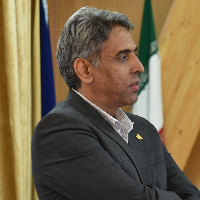دکتر محمد کوهی
-
در پژوهش حاضر رابطه ساختار خانواده و افت تحصیلی با نقش میانجی سبکهای هویت بررسی شد. روش پژوهش، همبستگی از نوع تحلیل مسیر بود. جامعه آماری شامل کلیه دانش آموزان متوسطه دوم شهر خرم آباد بود که از بین آنها با استفاده از روش نمونه گیری تصادفی چندمرحله ای و هدفمند تعداد 365 نفر به عنوان نمونه پژوهش انتخاب شدند. ابزارهای تحقیق شامل پرسشنامه های ساختار خانواده (FAD) و سبک هویت (ISI) بودند، همچنین معدل کمتر از 15 ترم گذشته دانش آموزان به عنوان ملاک افت تحصیلی در نظر گرفته شد. برای تحلیل داده روش تحلیل مسیر به کار رفت. بر اساس نتایج حاصل الگوی پیشنهادی پژوهش مورد تایید قرار گرفت ، بین ساختار خانواده و افت تحصیلی رابطه مستقیم وجود نداشت اما رابطه غیرمستقیم از طریق تمام خرده مولفه های سبکهای هویت وجود داشت، همچنین بین ساختار خانواده با تمام خرده مولفه های سبکهای هویت رابطه مستقیم یافت شد. علاوه بر این از بین خرده مولفه های سبکهای هویت، دو خرده مولفه سبکهای هویت سردرگم- اجتنابی و هویت اطلاعاتی با افت تحصیلی رابطه مستقیم نشان دادند. درمجموع ساختار خانواده به واسطه ی سبکهای هویت به عنوان یک میانجی بانفوذ می تواند بر افت تحصیلی دانش آموزان تاثیرگذار باشد. لذا، نقش محوری سبکهای هویت و ساختار خانواده باید در کانون توجه مداخلات و برنامه ریزی های مرتبط با بهبود عملکرد تحصیلی دانش آموزان باشد.کلید واژگان: ساختار خانواده، سبک های هویت، افت تحصیلیIn the present research, the relationship between family structure and academic failure is considered with mediator role of identity styles. The research method was correlation of path analysis. The statistical population consisted of all Secondary school students in the Khorramabad city. A sample of 365 students was selected using multi-stage random sampling and Purposive method. The research instrument consisted of Family structure Questionnaire (FAD) and Identity Styles (ISI), and the average less than 15 considered as a criterion for academic failure. For data analysis the path analysis method was used. Based on the results the research proposed model was approved. There was no direct relationship between family structure and academic failure, but there was an indirect relationship through all the components of identity styles, Also, there was a direct relationship between family structure and all components of identity styles. In addition, among the components of identity styles, two components of confused-avoidance identity styles and informational identity showed a direct relation with academic failure. In sum, the family structure through the identity styles as an influential mediator, can affect students' academic failure. Therefore, the central role of styles of identity and family structure should be at the center of attention of interventions and planning related to improving the academic performance of students.Keywords: Family structure, Identity styles, academic failure
-
هدف این پژوهش، بررسی تاثیر سرمایه های روان شناختی و روحیه پژوهشی با خودمختاری پژوهشی دانشجویان تحصیلات تکمیلی دانشگاه چمران اهواز بود. روش پژوهش، توصیفی از نوع همبستگی بود. جامعه آماری در این تحقیق شامل همه دانشجویان تحصیلات تکمیلی دانشکده های علوم انسانی دانشگاه چمران اهواز که در سال تحصیلی 97- 1396 مشغول به تحصیل بوده و تعداد آنها در کل 368 نفر بود. از این تعداد 190 نفر با روش نمونه گیری، طبقه ای نسبتی به عنوان نمونه پژوهش انتخاب شدند. گردآوری داده های پژوهش با استفاده از پرسشنامه های خودمختاری پژوهشی (2016، garavand)، سرمایه روان شناختی (لوتانز و همکاران، 2007) و روحیه پژوهشی (Shirzad,2011) انجام شد. تحلیل داده ها با استفاده از نرم افزار SPSS21 و بهره گیری از رگرسیون چندگانه انجام شد. نتایج، تحلیل رگرسیون نشان داد که از بین خرده مقیاس های سرمایه روان شناختی دو خرده مقیاس تاب آوری و خرده مقیاس خودکارآمدی قادر به تاثیرگذاری بر خودمختاری پژوهشی می باشند. علاوه بر این، از بین خرده مقیاس های روحیه پژوهشی، دو خرده مقیاس پشتکار و خرده مقیاس کنجکاوی قادر به تاثیرگذاری بر خودمختاری پژوهشی بودند.
کلید واژگان: خودمختاری پژوهشی، سرمایه روان شناختی، روحیه پژوهشی، دانشجویان تحصیلات تکمیلیThe purpose of this study was to investigate the effect of psychological capital and spirit of inquiry on research autonomy of postgraduate students of Chamran university of Ahvaz. The research method was descriptive correlational. the statistical population of the study included all postgraduate students of the faculties of humanities of Chamran university who were studying in the academic year 1396-97 that is total of 368 students of these, 190 people were selected by stratified sampling method as research sample. data were collected using Research autonomy questionnaire (Gravand, 2016), Psychological capital (Lutans et al., 2007) and Spirit of inquiry (Sherzad, 2012). data were analyzed by SPSS-21 software using multiple regression. The results of regression analysis showed that among the subscales of psychological capital, two subscales of resiliency and self-efficacy subscales were able to influence research autonomy. in addition, among the subscales of the spirit of inquiry, two subscales of perseverance and the curiosity subscale were able to influence research autonomy. Therefore, it is necessary to nurture and enhance resilience, self-efficacy, perseverance, and curiosity as effective factors in enhancing students' autonomy and research spirit, to consider the relevant professors, authorities, and policy makers and provide context for the realizing of these traits in educational settings.
Keywords: Research autonomy, psychological capital, spirit of inquiry, Graduate Students -
پژوهش حاضر با هدف ساخت و بررسی ساختار عاملی پرسشنامه درگیری پژوهشی دانشجویان انجام شد. روش پژوهش از نوع پیمایشی و جامعه آماری شامل کلیه دانشجویان تحصیلات تکمیلی دانشکده های علوم انسانی دانشگاه فردوسی مشهد (ادبیات و علوم انسانی، الهیات و معارف اسلامی، علوم ورزشی، علوم تربیتی و روانشناسی، علوم اداری و اقتصادی) به تعداد 3199 نفر بود که از طریق فرمول کوکران حجم نمونه 343 نفر برآورد شد. آزمودنی ها به روش نمونه گیری طبقه ای انتخاب شدند. مدل نظری لیننبریک و پینتریچ (2002) به عنوان مبنای ساخت مقیاس قرار گرفت. این مدل شامل سه مولفه ی درگیری شناختی، عاطفی و رفتاری است. از نرم افزار SPSS و AMOS برای تحلیل داده ها استفاده گردید. برای احراز روایی پرسشنامه از روایی محتوایی وتحلیل عاملی تاییدی و برای بررسی پایایی از ضریب آلفای کرونباخ استفاده شد. روایی محتوایی پرسشنامه توسط 8 نفر از متخصصان دانشگاه فردوسی مشهد (بر اساس شاخص روایی محتوایی) مورد تایید قرار گرفت و گویه های نامناسب حذف شدند. شاخص های نیکویی برازش مدل مذکور را تایید کردند. نتایج نشان داد ضریب آلفای کل پرسشنامه 89/0 و برای عامل های درگیری شناختی (80/0)، عاطفی (73/0) و رفتاری (76/0) بود. درمجموع پرسشنامه درگیری پژوهشی از همسانی درونی مطلوب و روایی مناسبی برخوردار بود و می توان از این پرسشنامه در پژوهش ها استفاده کرد.کلید واژگان: پرسشنامه، درگیری پژوهشی، پایایی، روایی، تحلیل عاملی تاییدیThe present study was conducted with the aim of constructing and investigating the factor structure of students' research engagement questionnaire. The research method was survey and the statistical population includes all of the postgraduate students of humanities faculty (Literature and Humanities, Islamic Theology and Science, Sport Sciences, Education and Psychology, Administrative and Economic Sciences) at Ferdowsi University of Mashhad (N=3199). Using Cochran formula, the sample size was estimated to be 343 student. The participants were selected by stratified random sampling. The theoretical model Linnenbrink and Pintrich (2002) was determined as the basis of scale construction. This model includes three components of cognitive, emotional, and leadership engagement. SPSS and AMOS software are used for data analysis. Content validity and confirmatory factor analysis were used to determine the validity of the questionnaire and Cronbach's alpha coefficient to check the reliability. The results showed that the alpha coefficient of the questionnaire was 0.89 and for cognitive (0.80), emotional (0.73) and behavioral (0.76). Content validity of the questionnaire was confirmed by 8 experts of Ferdowsi University of Mashhad (based on CVI) and inappropriate items were removed. Goodness indicators confirmed the fit of the model. According to the research results the research engagement questionnaire had good internal consistency and validity and this questionnaire can be used in research.Keywords: questionnaire, Research Engagement, reliability, validity, Confirmatory Factor Analysis
-
چرخه پژوهش علمی وابسته به مهارت های خودتنظیمی است و مشارکت در پژوهش نیازمند برنامه ریزی، نظارت و بازاندیشی است. هدف پژوهش حاضر بررسی خودتنظیمی پژوهشی دانشجویان تحصیلات تکمیلی بود، روش پژوهش توصیفی و جامعه آماری شامل تمامی دانشجویان تحصیلات تکمیلی دانشگاه فردوسی مشهد بود که از این تعداد 275 نفر به شیوه نمونه گیری سهمیه ای انتخاب شدند و به مقیاس محقق ساخته ی خودتنظیمی پژوهشی پاسخ دادند. پرسشنامه حاضر بر اساس نظریه خودتنظیمی زیمرمن (2002) تهیه گردید و روایی محتوایی آن از طریق داوری تخصصی شش تن از اساتید روانشناسی و علوم تربیتی تایید شد. تحلیل مولفه های اصلی با چرخش واریماکس بیانگر وجود چهار عامل بود که روی هم 90/41 درصد از واریانس پرسشنامه خودتنظیمی پژوهشی را تبیین کردند. ضریب آلفای کرونباخ برای پرسشنامه خودتنظیمی پژوهشی (93/0) و برای عامل های باورهای انگیزشی (87/0)، مدیریت منابع پژوهشی (84/0)، نظارت و بازاندیشی (84/0) و آینده نگری (83/0) به دست آمد. نتایج نشان داد که بین مقاطع تحصیلی ازلحاظ خودتنظیمی پژوهشی تفاوت معناداری وجود ندارد اما بین گروه های آموزشی علوم انسانی و غیر علوم انسانی تفاوت معناداری وجود دارد، طوری که میانگین دانشجویان رشته های علوم انسانی در عامل های باورهای انگیزشی و مدیریت منابع به طور معنی داری بیشتر از دانشجویان رشته های غیر علوم انسانی بود؛ بنابراین، بهبود عملکرد پژوهشی دانشجویان نیازمند توجه و آموزش اساتید، دانشگاه و برنامه های درسی به مهارت های خودتنظیمی در پژوهش است.
کلید واژگان: خودتنظیمی پژوهشی، تحصیلات تکمیلی، گروه های آموزشی، مقاطع تحصیلی، نظریه خودتنظیمی زیمرمنCycle of scientific research related to self-regulation skills and participation in research requires planning, monitoring and reflection. The aim of this study was to investigate of research self-regulation of post graduate students. The research method was descriptive. The statistical population included all postgraduate students of Ferdowsi university of Mashhad. 275 students were selected from the mentioned population by quota sampling method and answered the research self-regulated questionnaire. The questionnaire was developed based on Zimmermann's self-regulation theory (2002) and its content validity was confirmed by the expert judgment of six psychology and education scholars. Principal component analysis with varimax rotation revealed four factors that explained 41.90% of the variance of the research self-regulation questionnaire. Cronbach's alpha coefficients used for research self-regulation questionnaire (0.93) and motivational beliefs (0.87), research resource management (0.84), Monitoring and Self-reflection (0.84), and Forethought (0.83).The results showed that there was no significant difference between the degrees of education in self-regulation, but there was a significant difference between educational groups that the mean of motivational beliefs and resource management factors of the students of the humanities was higher than the non-human sciences students. Therefore, according to the findings of this study, improving student performance requires teachers’ attention and training, academic curriculum to research self-regulation.
Keywords: Research Self- regulation, post-graduate, Educational Groups, Academic Degrees, Zimmermann's self-regulation theory -
هیجان ها به طور بالقوه در هر جنبه ای از فرایند تدریس و یادگیری دخیل هستند و تدریس خوب با انواعی از هیجان های مثبت تحقق پیدا می کند. بنابراین درک ماهیت هیجان ها در محیط های آموزشی ضروری است. هدف از انجام این پژوهش، بررسی شاخص های روان سنجی پرسشنامه هیجان های تدریس تریگول (2012) بود. روش پژوهش، توصیفی از نوع همبستگی و جامعه پژوهشی کلیه اساتید دانشگاه فردوسی مشهد (804 نفر) بودند. حجم نمونه بر اساس فرمول کوکران 280 نفر تعیین شد و به روش نمونه گیری طبقه ای نسبتی انتخاب شدند. روایی محتوایی پرسشنامه توسط 5 نفر از متخصصان دانشگاه فردوسی بر اساس شاخص روایی محتوایی موردبررسی قرار گرفت، برای احراز روایی سازه از تحلیل عاملی تاییدی و برای پایایی از روش همسانی درونی و باز آزمایی استفاده شد. نتایج تحلیل عاملی تاییدی برازندگی مدل و ساختار روابط درونی گویه ها را تایید کرد. ضریب آلفا برای کل پرسشنامه هیجان های تدریس برابر با 89/0 و برای عامل ها از 73/0 تا 84/0 به دست آمد. نتایج نشان داد که پرسشنامه هیجان های تدریس از ویژگی های روان سنجی قابل-قبولی برخوردار است و می توان از آن به عنوان ابزاری معتبر در مطالعات هیجان های مربوط به تدریس استفاده کرد.کلید واژگان: رواسازی، تحلیل عاملی تاییدی، تدریس دانشگاهی، هیجان های اساتید، پرسشنامه هیجان های تدریسEmotions are intimately involved in virtually every aspect of the teaching and learning process and good teaching is charged with positive emotions. Therefore; an understanding of the nature of emotions within the educational context is essential. This study aimed to investigate the Psychometric Properties of the emotions in the teaching Inventory of Trigwell (2012). The research method was descriptive-correlative. Teachers of Ferdowsi University of Mashhad were the research population. The required sample size was determined 280 based on the Cochran formula and participants were selected by the relative class sampling method. The Content Validity of inventory was evaluated by 5 experts based on the CVI Index. The validity was determined by confirmatory factor analysis and the reliability of ETI was confirmed by internal consistency (Cochran`s alpha) and test-retest method. The goodness of fit indexes was confirmed by confirmatory factor analysis (CFA). Also, the alpha coefficient for total size was 0/89 and for subscales was from 0/73 to 0/84. Hence, Results showed that Emotions in the teaching Inventory had acceptable psychometric properties in the sample of university teachers and can be used as a valid scale in studies related to the teaching emotions.Keywords: Validation, Confirmatory Factor Analysis, Academic Teaching, Emotions of university teachers, Emotions in teaching inventory
-
تحقیق حاضر باهدف بررسی رابطه ی ساده و چندگانه ی محیط های سازندگی با روحیه ی پژوشی دانشجویان تحصیلات تکمیلی دانشگاه فردوسی مشهدانجام شد. روش تحقیق توصیفی از نوع همبستگی و جامعه آماری تحقیق (475) نفر از دانشجویان تحصیلات تکمیلی دانشکده علوم تربیتی و روانشناسی دانشگاه فردوسی مشهد بود که تعداد 135 نفر (99 نفر زن و 36 نفر مرد) به روش نمونه گیری تصادفی طبقه ای و بر اساس فرمول کوکران انتخاب شدند. ابزار های مورداستفاده شامل پرسشنامه محیط های سازنده گرایی و روحیه پژوهشی بودند. نتایج ضریب همبستگی پیرسون نشان داد که بین مقیاس محیط های سازنده گرایی و تمام خرده مولفه های روحیه پژوهشی بجزء خرده مولفه تاکید بر دانش قبلی رابطه مثبت و معنی داری وجود داشت علاوه بر این تحلیل رگرسیون ساده نشان داد که از طریق محیط های سازنده گرایی می توان روحیه پژوهشی را پیش بینی کرد و از بین خرده مولفه ی محیط های سازنده گرایی سه خرده مولفه ی نقش تسهیل گری استاد، ارزشیابی تکوینی و توجه به دیدگاه های مختلف قادر به پیش بینی روحیه پژوهشی شدند. بنابراین لازم است که اساتید دانشگاه ها برای بهبود روحیه پژوهشگری در دانشجویان آموزه های رویکر سازنده گرایی را مد نظر داشته باشند و بشتر تسهیل گر جریان آموزش و پژوهش باشند نه انتقال دهنده صرف اطلاعات.کلید واژگان: محیط های سازنده گرایی، روحیه پژوهشی، نقش تسهیل گری استاد، ارزشیابی تکوینی، توجه به دیدگاه های مختلفThe purpose of this study was to investigate the simple and multiple relationship between constructive environments with the Research Spirit of Graduate Students of Ferdowsi University of Mashhad. The research method was descriptive and correlational and population (475) students of the faculty of Education and Psychology, Ferdowsi University of Mashhad, 135 of students (99 females and 36 males) were selected by Stratified random sampling based on Cochran formula. Instrument were included constructivism environments questionnaire and Research spirit. The results of Pearson correlation coefficient showed that there was a positive and significant relationship between the scale of constructivism environments and all the sub-components of the research Spirit, except for the sub-components of emphasis on previous knowledge. In addition, simple regression analysis showed that through constructivist environments, could predicted Research Spirit . Among the sub-components of constructivist environments, the three sub-components of the facilitator's role, the Formative assessment, and attention to different perspectives were able to predict the Research Spirit. Therefore, it is imperative that university professors take into account the constructivist approach Teachings to improve the student's spirit of research and, moreover, facilitate the flow of education and research rather than the transfer of information.Keywords: constructivism environments, Research spirit, the facilitator's role of the professor, Formative Assessment, attention to different perspectives
- این فهرست شامل مطالبی از ایشان است که در سایت مگیران نمایه شده و توسط نویسنده تایید شدهاست.
- مگیران تنها مقالات مجلات ایرانی عضو خود را نمایه میکند. بدیهی است مقالات منتشر شده نگارنده/پژوهشگر در مجلات خارجی، همایشها و مجلاتی که با مگیران همکاری ندارند در این فهرست نیامدهاست.
- اسامی نویسندگان همکار در صورت عضویت در مگیران و تایید مقالات نمایش داده می شود.





